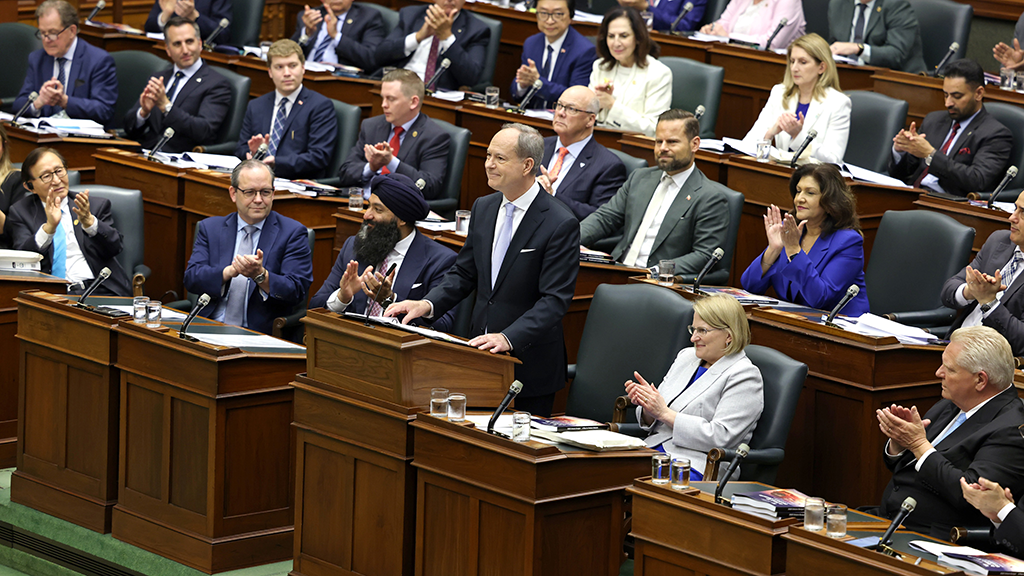TORONTO — Construction industry stakeholders had nothing but praise for the recently unveiled $232.5 billion Ontario budget, stating it helps combat the economic uncertainty revolving around U.S. President Donald Trump’s tariffs by protecting workers and putting infrastructure at the forefront.
Finance Minister Peter Bethlenfalvy outlined several measures in Budget 2025, A Plan To Protect Ontario on May 15, including $30 billion in spending to stimulate the economy in the face of tariffs, including a $5-billion fund to give businesses relief, adding $5 billion to an infrastructure financing fund, and implementing a new, $500-million Critical Minerals Processing Fund. There’s also $1 billion being added to the Skills Development Fund to retrain workers.
The budget is forecasting a $14.6-billion deficit this fiscal year and a deficit of $7.8 billion next year.
“The investments Budget 2025 makes in critical infrastructure advance the Ontario government’s commitment to growth and addressing long-standing challenges,” said Nadia Todorova, executive director of the Residential and Civil Construction Alliance of Ontario (RCCAO), in a statement. “The Ontario government’s investment in the Skills Development Fund is good news for Ontario workers. It will expand the labour market’s capacity to build Ontario and this $1 billion investment in skills training will be crucial for our province’s ability to build critical infrastructure and grow our province’s prosperity for generations to come.”
The RCCAO also praised the creation of a Potholes Prevention Fund to help improve state-of-good-repair work on the province’s roads. In general, the association did suggest faster project tendering could “maximize industry’s capacity to build during construction season as well as make greater progress in closing the infrastructure deficit across the province.”
The Progressive Contractors Association of Canada (PCA) also praised the investment in workers.
“These are the kinds of investments that will help get our workers, our members, and our communities through today’s economic challenges,” said Karen Renkema, VP Ontario at PCA. “We appreciate the continued focus on skills training and infrastructure as measures to help steer Ontario’s economy through the roller-coaster trade war with the U.S.”
Delving deeper into the SDF funding, the PCA and its partner organization CLAC outlined:
- $159.3 million over three years to support ongoing growth and program stability in various skilled trades programs, including expansion of the In-Class Enhancement Fund to increase the number of training seats for Level 1 apprentices.
- $75 million over three years to create up to 2,600 new seats annually in priority construction-related post-secondary programs (beyond apprenticeship).
“The investment in the In-Class Enhancement Fund to train apprentices will make a difference, as long as this funding is available to all training providers, especially regional colleges, who provide in-class training for the vast majority of our members’ apprentices across Ontario,” added Renkema.
Skills Ontario CEO Ian Howcroft commended the government’s investment on retraining, health and safety and supporting Black and Indigenous youth in entering these fields.
This includes $16.5 million in 2025–26 to the Black Youth Action Plan and a $3 billion investment in the new Indigenous Opportunities Financing Program.
“Working together and inspiring the next generation of skilled trade and technology leaders is crucial to our success and future as a province, and we are looking forward to continuing to provide learning opportunities to all Ontarians,” Howcroft stated.
Marc Arsenault, business manager of the Provincial Building and Construction Trades Council of Ontario, said the budget will help safeguard jobs through domestic investments and may soften the “external shocks like tariffs.”
“Committing $200 billion over the next 10 years towards building and renewing Ontario’s vast infrastructure reinforces the government’s willingness to collaborate with the industry to seek domestic solutions to economic challenges. This includes substantial supports for the energy sector as well as human resource investments in training,” he said, adding the SDF funding is a critical component as well.
“These investments show that the government wants to protect jobs, grow the economy, and overcome any barriers to success.”
The Ontario General Contractors Association echoed these sentiments.
“These strategic investments are vital to the province’s long-term prosperity. OGCA members stand ready to support this important work as we continue to build Ontario together,” the association noted.
Ian Cunningham, president of the Council of Ontario Construction Associations, summed it up by saying: “In these highly unusual and uncertain economic circumstances, the Ontario government tabled a budget that provides relief for the workers and businesses that are most severely impacted by the current economic disruption, makes investments that will reposition the province’s economy to be oriented to the future, more resilient, diversified and less reliant on U.S. exports and demonstrates fiscal cautionary prudence. The balance seems to be about right. Congratulations to minister Bethlenfalvy and his budget team.”



Recent Comments